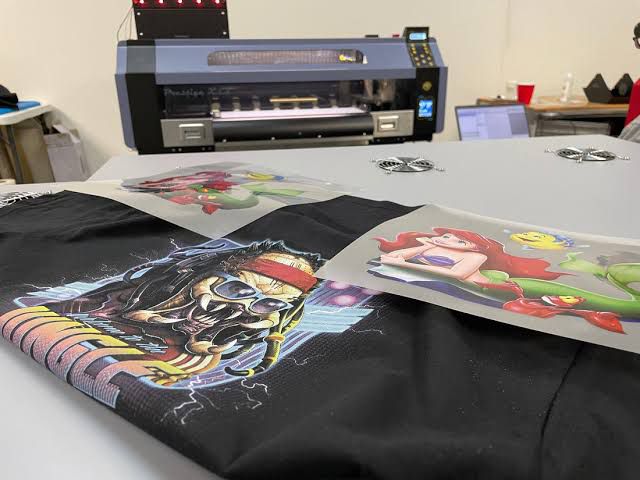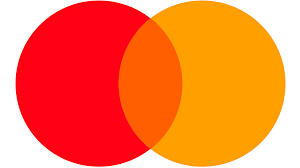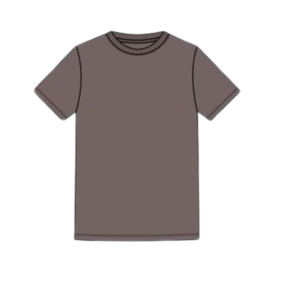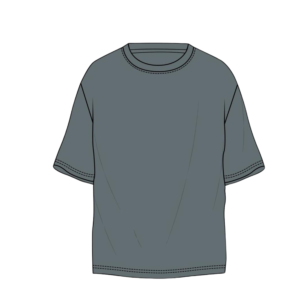What is DTF and How It Plays Its Role in the Clothing Industry?

As the world of fashion and print on garments continually evolves, newer technologies and methods are constantly brought to the scene to improve the processes of transferring prints onto clothing. One such technological advancement that has recently been thrust into the spotlight is **DTF**, which is short for **Direct-to-Film** printing. But what is DTF, and what does it have to do with the clothing industry? In this blog, we will cover the specifics of DTF; explain how it works and its role in reinventing the garment decoration process.
### What is DTF Printing?
**Direct-to-Film (DTF) printing** is a relatively new method of printing garments. It is a process of printing designs directly onto a special film, which is then transferred onto fabric. Unlike traditional methods such as screen printing or heat transfer vinyl (HTV), DTF allows for more intricate designs and vibrant colors to be applied quickly and efficiently.
The DTF process involves several key steps:
1. **Design Creation**: A digital design is created using graphic design software.
2. **Printing on Film**: The design is printed onto a special PET film (polyethylene terephthalate) using a specialized DTF printer. The ink used is typically water-based and highly pigmented.
3. Powder Adhesion. Once printed, a special adhesive powder is applied to the design while the ink is still wet. This powder is then heated to make sure it adheres to the design.
4. Heat Transfer. The film with the printed design is applied to the garment, and heat is used to transfer the design from the film to the garment.
This is high-quality, long-lasting, and durable print which is bright, and it can be applied on different kinds of fabrics like cotton, polyester, and blend.
### How DTF Works and its Advantages
Having gone through the basic concepts of DTF, let’s proceed with the discussion of why DTF has gained immense popularity in the clothing industry.
#### 1. **Vibrant and Detailed Prints**
One of the most impressive characteristics of DTF printing is the ability to replicate highly detailed and vibrant designs. Whether it’s complex graphics, intricate patterns, or photorealistic images, DTF delivers top-notch print quality with rich colors and fine details. Unlike other traditional methods, DTF doesn’t require using screens or stencils; hence, printing fine lines and gradients is done easily.
#### 2. **Versatility with Fabrics
DTF printing is also versatile in terms of the type of fabrics that can be applied. Unlike screen printing, which is often limited to a specific type of textile, DTF can be used on a wide range of materials such as cotton, polyester, blends, nylon, and even leather or canvas. This makes it an ideal choice for custom apparel, accessories, and promotional items.
#### 3. **Cost-Effective for Small Batches and Customization
DTF printing is effective for small-run or custom orders because a method like screen printing would be expensive for setting up every design. Nothing needs to be spent on expensive screens or molds since DTF is a digital print type. This makes it easy to change designs when necessary because of the digital nature of the print. Thus, DTF is perfect for businesses looking to make custom apparel without breaking the bank, particularly for a small batch or on-demand printing.
#### 4. **Soft Feel and Durability**
The soft feel of DTF prints is one of the major advantages over other heat transfer methods. Unlike screen printing, where the ink can sit on top of the fabric, DTF prints blend into the fibers of the material, resulting in a smoother, softer finish. DTF prints are also very durable. They do not crack or fade easily, even after multiple washes, making them a great choice for creating long-lasting designs on clothing.
#### 5. **Quick Turnaround Time**
DTF printing offers a faster production turnaround compared to some traditional printing methods. Since it’s a digital process, there’s minimal setup time required, and multiple designs can be printed simultaneously. This is a huge advantage for businesses that need quick delivery times for custom orders or limited-edition apparel.
### DTF in the Clothing Industry: How it’s Revolutionizing Fashion and Apparel
DTF printing has changed the face of clothing production and customization, due to its versatility, affordability, and quality. Here is a look at how DTF is playing a key role in the clothing industry:
#### 1. **Custom Apparel for Small Businesses and Startups
DTF printing opens the floodgate for small enterprises and entrepreneurs that can afford them to print high-quality bespoke apparel with negligible upfront costs. Whether a brand of clothing, looking for custom designs for some of their articles, or the business offers some personalized merchandise items, DTF makes it very easy and economic to print such products in fewer quantities. And with one-offs, there would be more than enough reason for niche markets and custom requests.
2. **On-demand Printing and E-commerce
With e-commerce and print-on-demand services emerging, DTF printing is more popularly being used by online stores and businesses dealing in personalized clothing. With no minimum order requirement and large productions runs, DTF printing helps businesses print designs on demand, thereby minimizing the need for holding massive inventory and minimizing waste. Customer order of customized designs; after a couple of days, the designs are printed and shipped to the customer.
3. Fashion and designer collaborations
DTF printing can be used on a number of fashion pieces, such as limited-edition collections and collaborations from famous fashion designers and apparel brands. This fast and affordable creation of high-quality, intricate designs makes it easier for designers to try out new concepts and add bold, creative graphics to their collections. The fashion world has always been known for its dynamic versatility in graphic tees, streetwear, athleisure, and many more with the help of DTF printing.
#### 4. **Eco-Friendly Printing**
Since DTF printing employs water-based inks and produces very little waste in terms of setup, it can be regarded as a greener option than screen printing, which requires toxic chemicals and massive amounts of water for cleaning. The direct-to-film process of DTF also reduces the use of physical screens or stencils, which can be expensive and wasteful.
Conclusion
DTF (Direct-to-Film) printing is moving fast through the clothing industry, creating versatile, cost-effective, high-quality printing. Something from bright and detailed prints to customization and reducing waste, it plays a great role in fulfilling the requirements of the modern fashion world. Whether one is a small business operator, an e-commerce retailer, or a fashion designer, DTF provides an innovative outlet to produce superior quality garments with comfort and ease.
The continued advancements in technology make DTF printing even more inevitable as an essential component of the fashion and apparel industry, providing easy means for making unique clothing items that meet customers’ demands.
### What is GSM? A Simple Definition
GSM stands for **Grams per Square Meter**, which is a measurement of weight or density. It is how much fabric is actually contained within a square meter of material. A simple word, GSM helps determine how thick, dense, or light a fabric is. Its texture, durability, and usability depend on it.
### Importance of GSM in Clothing Industry
GSM is an essential parameter in the clothes industry for quality and suitability of a fabric for various products. This is why it matters. It establishes why:
1. Fabric thickness and feel:
– GSM refers to the thickness of the weave; the thicker the weave, the heavier the fabric; the thinner the weave, the lighter the fabric. Less substantial and less luxurious fabrics are thus at lower GSMs, while those preferred for warm-weather clothes and layering would be at lower GSMs.
2. **Durability:**
– The higher the GSM, the more durable and long-lasting the fabric is because it has more material in its structure. For instance, heavier GSM fabrics like denim or canvas are known for their strength and resistance to wear and tear, while lighter GSM fabrics like cotton voile or muslin may not withstand harsh use as well.
3. **Breathability and Comfort**:
– The GSM of a fabric can also influence its breathability. Lighter GSM fabrics, such as those with a GSM of 100-150, are often preferred for summer clothing like T-shirts or blouses because they allow air to flow through, keeping the wearer cool. Heavier GSM fabrics, like those in towels or sweatshirts, provide more insulation and warmth, making them ideal for colder weather.
4. **Purpose of the Garment**:
– Various types of clothing need different GSM ratings. For example:
– **T-shirts**: A normal T-shirt would have a GSM between 140-200. The lighter GSM T-shirts are soft and perfect for hot weather, while heavier GSM T-shirts provide a more structured fit and can be used for colder months.
– **Towels**: Towels are usually more absorbent and plush due to their higher GSM, which ranges from 350 to 700 GSM.
– **Sweatshirts and Hoodies**: These have a GSM of 280-350, making them warm and comfortable during the colder seasons.
5. **Quality Indicator**
– GSM can also serve as a determinant of the quality of fabric. For instance, premium cotton fabric might have a higher GSM that would make it feel more luxurious and thick. Lower GSM fabric, on the other hand, may be less expensive but may be flimsier or less durable.
### GSM and Fabric Types
GSMs can vary in different fabrics based on the type of material used and the intended use. Some examples include:
– **Cotton**: The fabrics may vary between lightweight and fluffy, with an average GSM around 100, used for summer dresses to heavy and dense, about 500 GSM for towels or thick bedding.
– **Polyester**: Polyester’s average GSM tends to range from 100 to 300 in most clothing items such as shirts, sportswear, and outerwear.
– **Denim**: Denim fabric is typically a bit higher in GSM, at around 200-400 GSM, which explains why it is more durable and robust.
### Determining GSM
GSM is usually measured in a lab by specialized equipment. But you can do a quick check at home. Here’s how:
1. Cut a piece of fabric approximately 10 cm x 10 cm in size.
2. Measure the weight of the fabric on a sensitive scale.
3. Apply the formula to calculate GSM:
**GSM = (Weight of Fabric in grams / Area of Fabric in square meters) x 1000**
This is a very rough estimate and is usually used for small-scale measurements, such as checking fabric samples.
### The Bottom Line: Why You Should Care About GSM
Understanding GSM is important while shopping for clothing and fabrics because it lets you decide on your clothing needs about fabric quality, comfort, and durability. If you seek a soft, breathing T-shirt for summer or a cozy, heavyweight towel, knowing the GSM of a fabric will allow you to choose the right product according to your needs.
Ultimately, GSM is a key indicator of fabric characteristics, making it an essential part of both production and consumer decision-making in the clothing industry. Next time you come across GSM listed on a product label, you will have a deeper understanding of what that number means and how it influences the feel and performance of the garment!
















